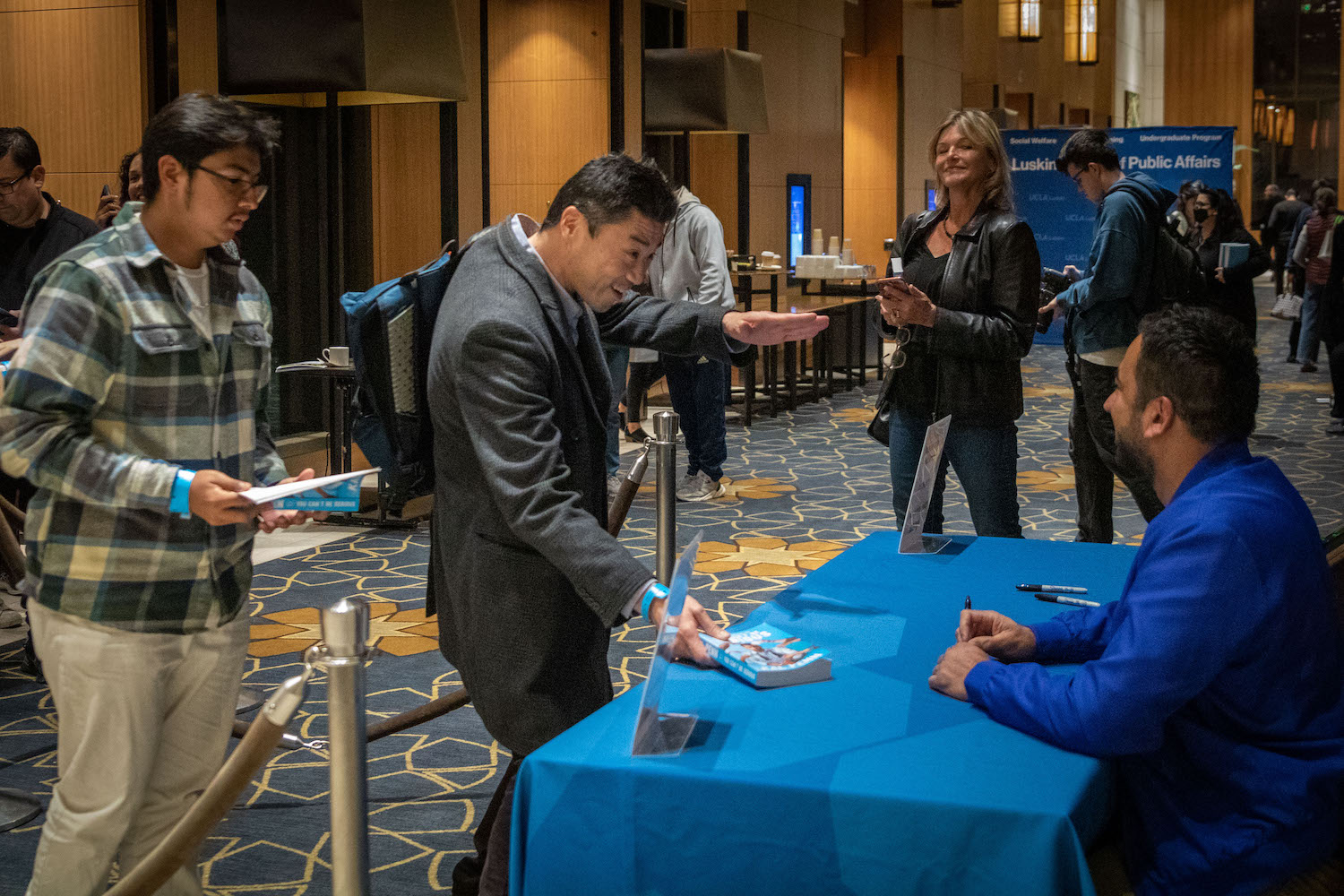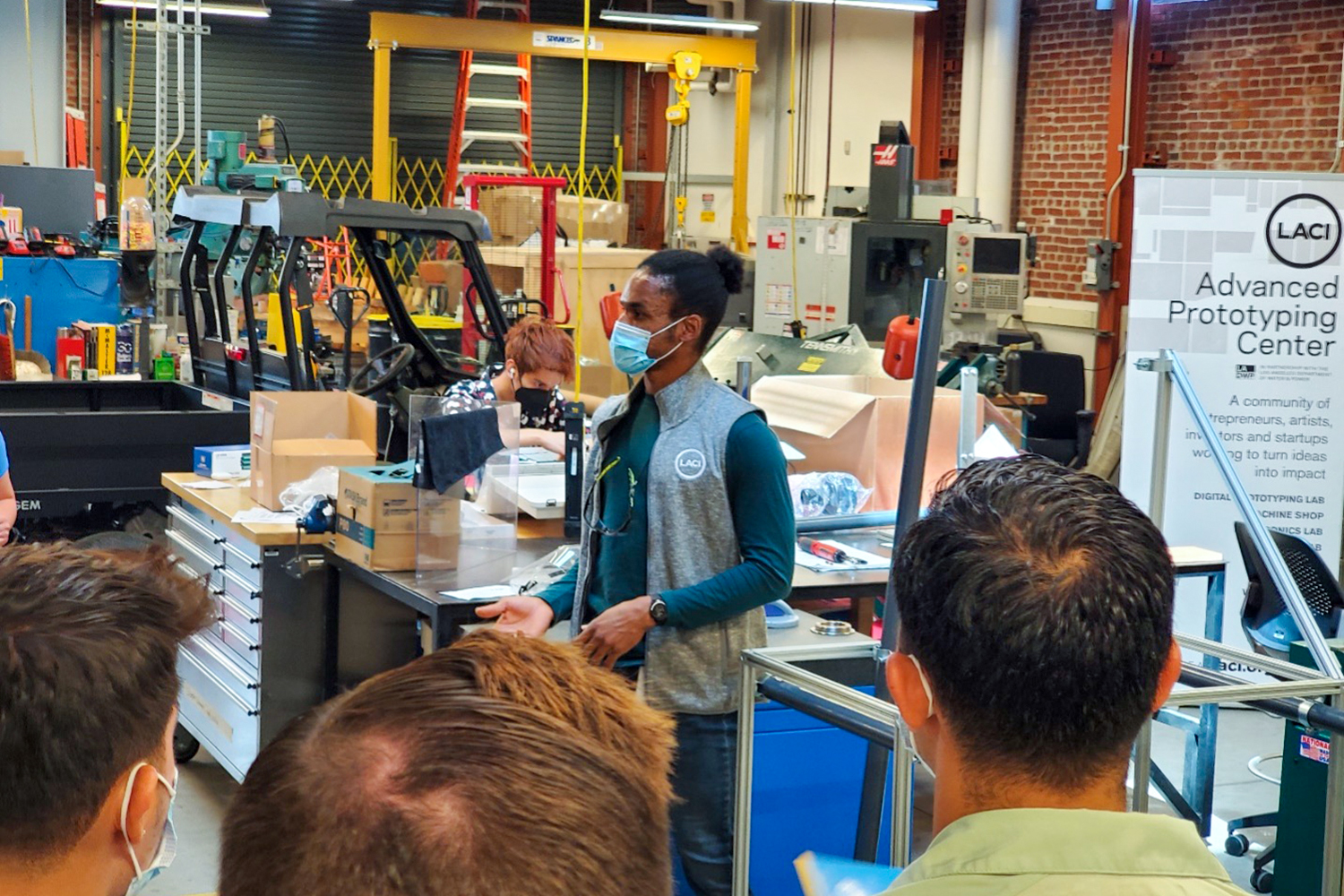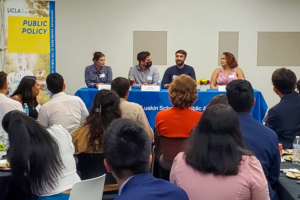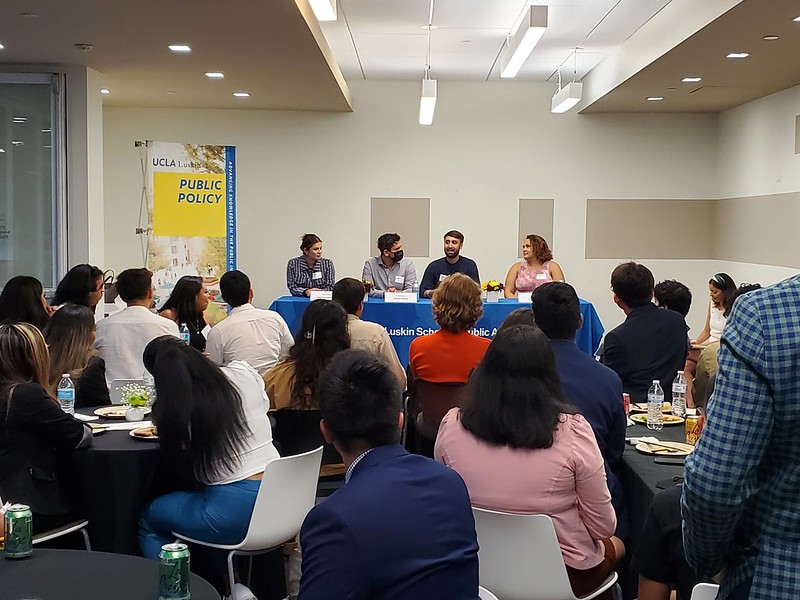Abrams and Boston University Dean Call for Social Workers to Use Knowledge for Change Scholars must wrestle with the root causes of social inequality and strive toward bettering people's lives, they write
Professor Laura Abrams, chair of UCLA Luskin Social Welfare, and Dean Jorge Delva of Boston University’s School of Social Work (BUSSW) are co-authors of a newly published journal article looking at the opportunities and obligations of social work research.
Published by the Journal of the Society for Social Work & Research, “Social Work Researchers: From Scientific Technicians to Changemakers” is a call to action for social work scholars to direct their efforts toward high-impact research that produces findings that can be applied in a timely manner to influence programs, policies or movements that improve the lives of the most marginalized and oppressed populations.
Abrams and Delva note that amid recent social tumult, global challenges and increased attention to racism and anti-Blackness, there has been an increase in demand for research that is both scientific and attentive to social, racial, economic and environmental justice.
They say, however, that an empirical push in social work research has resulted in “a focus on quantity over impact; undue emphasis on publishing in journals, often in non-social-work journals that have high impact factors but are separated from our practice community; engagement in ‘traditional’ modes of scholarship that do not necessarily challenge the status quo; and pursuit of NIH funding as an end in itself.”
The authors acknowledge the value of National Institutes of Health funding but write that the “narrow focus on NIH as an arbiter of a successful scholar … has also reinforced the top-down, parachuting type of research whereby researchers drop into a community, conduct their research and depart with little to no involvement by and impact on the community.”
Pushing toward evidence without a solid anchor to communities is a phenomenon that the authors attribute to pressures within academia to attain ever-greater funding, power and prestige — pressures fed by incomplete measures of success such as the U.S. News & World Report rankings.
Delva and Abrams point to a paradigm shift, saying the next generation of social work scholars is ready for change. New momentum exists for the belief that current research practices function as tools of white supremacy, patriarchy and oppression, which is an idea advanced as early as 1968, when the National Association of Black Social Workers urged the National Conference on Social Welfare to publicly repudiate the welfare system.
Delva and Abrams say that social work must reach beyond the goal of implementing health research into practice and also wrestle with the root causes of social inequalities. In the same way that science alone could not have improved women’s lives without women’s rights movements, social science can only make an impact with communal support and momentum, the co-authors write.
Abrams, whose research centers on improving the well-being of youth and adults with histories of incarceration, joins Delva, the Paul Farmer professor and director of the Center for Innovation in Social Work & Health at BUSSW, in imploring academic leaders to make a more concerted effort to elevate and reward work based on public impact, community participatory research and social movements.




 The three-year study, funded by the Houston-based philanthropy Arnold Ventures, aims to build a base of knowledge that supports safe and equitable sentencing and “second-look” policies for people sentenced to life for offenses committed before they were 18 years old. Many have spent years or decades behind bars.
The three-year study, funded by the Houston-based philanthropy Arnold Ventures, aims to build a base of knowledge that supports safe and equitable sentencing and “second-look” policies for people sentenced to life for offenses committed before they were 18 years old. Many have spent years or decades behind bars.














